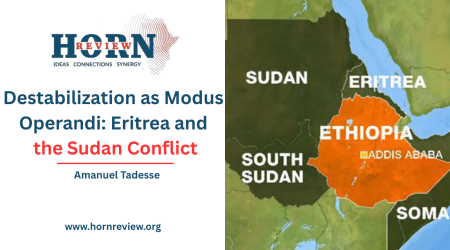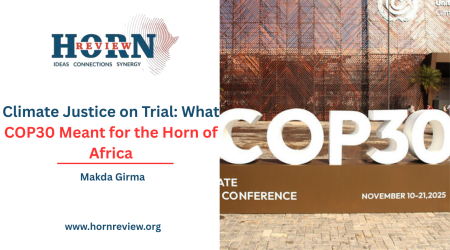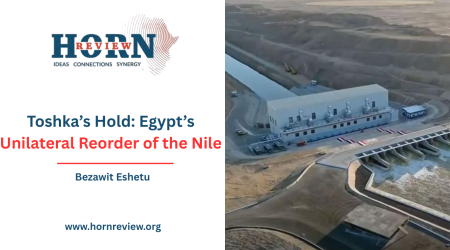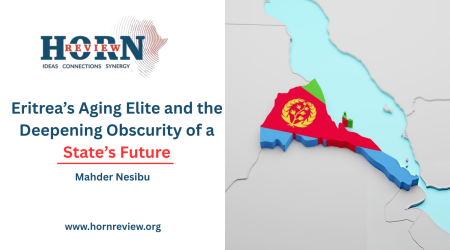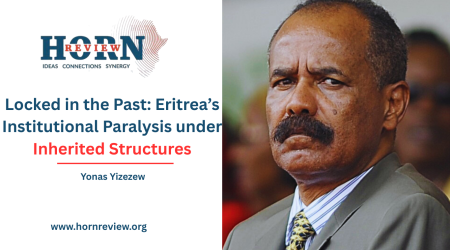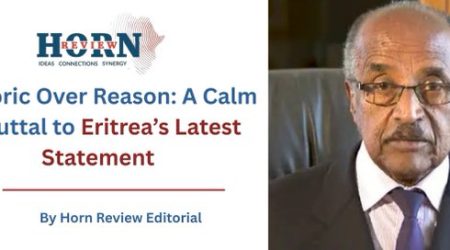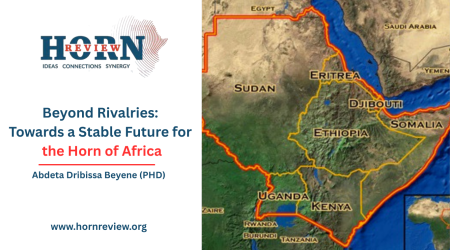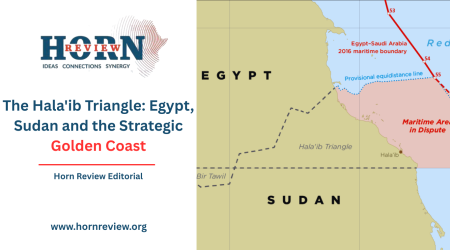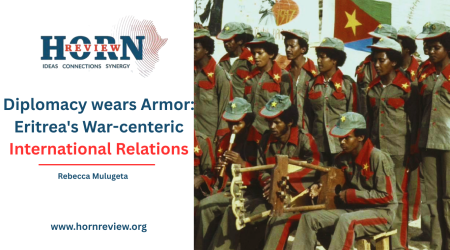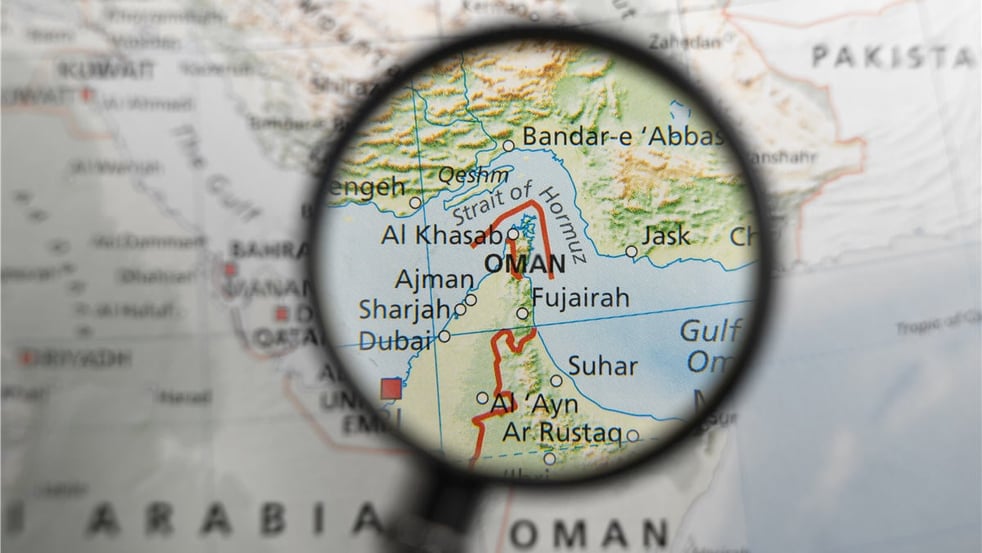
7
Jul
Chokepoint Crisis: How the Strait of Hormuz Affects the Horn of Africa and Global Oil Markets
The narrow Strait of Hormuz is one of the world’s most important shipping arteries. This narrow waterway, located at the mouth of the Persian Gulf and the Gulf of Oman, is also about 50 kilometers wide at its narrowest point between Oman and Iran. This critical oil chokepoint channels about 20–25% of global oil supplies daily. Its strategic importance makes it a flashpoint for geopolitical tensions, with disruptions capable of roiling oil markets worldwide. Due to its proximity to the Middle East and its role in global energy, the geographically distant area (Horn of Africa) will be impacted by the stability or the instability of the strait.
For the economically fragile and politically unstable Horn of Africa, these disturbances tend to exacerbate existing issues at a higher cost and threaten security. Geopolitics in the Strait is directly affected by the conflict. Tension accumulation in the form of confrontation can lead to an increased risk of disruption or potential blockage of the strait, impacting oil shipments. This can lead to a global energy crisis, with disastrous consequences for the foreign oil-import-dependent economies in the Horn of Africa. Furthermore, such breaks would trigger what is referred to as a “tanker war,” a characterization of those wars in which oil tankers are intentionally bombed to sever supply lines, as previously occurred in the Persian Gulf.
The Strait of Hormuz’s significance lies in its role as a conduit for 21 million barrels of oil per day, according to the U.S. Energy Information Administration. Connecting the Persian Gulf to the Gulf of Oman, it serves as a lifeline for oil-exporting nations like Saudi Arabia, Iran, and the UAE. At its narrowest, the strait is just 21 miles wide, with shipping lanes only two miles across, making it highly vulnerable to blockades, attacks, or accidents. Iran has repeatedly threatened to close the strait in response to sanctions or military actions, heightening its status as a global hotspot.
If there is any disruption in the Strait of Hormuz by the Zionists, it can send oil prices soaring.
Historically, the Iran-Iraq War in the 1980s saw tanker attacks that reduced oil flows and spiked prices. This period, known as the “Tanker War,” involved Iran and Iraq targeting each other’s oil tankers in the Persian Gulf to cripple their economies and disrupt global oil supplies.
The implications were profound: oil prices surged, shipping costs increased due to heightened risks, and superpowers intervened to protect their interests. In 1987, Kuwait asked the U.S. Navy to participate, escorting Kuwaiti tankers reflagged as American vessels to ensure oil flow, demonstrating how tanker wars can escalate into broader conflicts involving global powers.
More recently, the 2019 attacks on oil tankers, attributed to Iran, briefly pushed prices up by 10%. Analysts from CNBC warn that even a partial closure today could drive prices above $100 per barrel, straining economies dependent on affordable energy. The strait’s proximity to Middle Eastern conflicts amplifies this risk. A tanker war today would not only disrupt oil markets but could also draw in superpowers like the United States, Russia, or China, turning a regional conflict into a global crisis.
If there is any potential tanker war in the Persian Gulf, just like the previous Iran-Iraq War between those countries, there is a high probability that it will be changed to a proxy war between the superpowers. Just like in the 1980s, if Israel demands help from America in the current conflict, the U.S. Navy might participate, and Iran will seek help from communist countries like Russia or China. A tanker war in the Persian Gulf could emerge if Israel disrupts oil flows intentionally or as collateral damage, prompting Iran to retaliate by targeting tankers. Evidence of this possibility lies in Iran’s past behavior: it attacked tankers in 2019 amid tensions with the U.S., and its threats to close the strait during conflicts with Israel or Western powers are well-documented.
Will the United States Navy intervene as it did in the first tanker war? If the U.S. participates, it will be a global proxy war. The precedent exists: Kuwait asked the U.S. to participate in the 1980s, and Israel, a close U.S. ally, might request similar support to secure oil routes or counter Iran. Iran, in turn, may ask for help from communist-aligned nations. While Russia and China have economic ties with Iran Russia via arms sales and China through oil imports their direct military involvement is uncertain. However, the U.S. has a clear interest in protecting oil flows, as seen in its 1980s intervention and its current naval presence in the Gulf. The June 12, 2025, Israeli strikes on Iran, followed by Iran’s retaliatory drone attacks (reported by Al Jazeera), heighten this risk, showing both sides’ willingness to escalate.
Somalia, Ethiopia, and Djibouti in the Horn of Africa also highly rely on imported petroleum, for transport, agriculture, and power generation. When the price of oil rises, these nations pay higher domestic costs that flow through their economies. In Ethiopia, past price surges have constricted government budgets, cutting back on infrastructure and social spending. Somalia, already battling poverty, faces frequent shortages of fuel that paralyze trade and exacerbate food insecurity. Constrained fiscal buffers make them poorly placed to cushion such shocks. A tanker war increasing oil price volatility would Worsen these effects, Potentially putting the region deeper into economic trouble.
Economics aside, turmoil in the Strait of Hormuz risks destabilizing the Horn of Africa. Middle Eastern conflicts have a habit of spilling over, impacting migration and piracy. The Yemeni war, for instance, has boosted piracy in the Gulf of Aden and driven refugees into Somalia. Higher oil prices also risk stoking domestic unrest, as governments struggle to maintain order as prices spike. These pressures threaten an already volatile region with even greater instability.
Superpower involvement in a tanker war could aggravate this, as proxy wars would promote local militias or pirates with outside backing.
To address these vulnerabilities, it requires diversified energy sources, such as wind or solar energies, however, the Horn of Africa’s political instability and funding shortages will slow the progress. Regional cooperation, like joint energy projects, could build resilience, but implementation lags. International aid and technology transfers play a crucial role in helping these nations oil price volatility and reduce dependence on the strait. Without such measures, a tanker war’s fallout would hit the region hard.
To deepen regional resilience, policymakers should prepare for dramatic maritime insurance premium spikes during Gulf crises which can double or even triple shipping costs and drive up fuel prices for end users by diversifying supply routes through alternative corridors like the UAE–Oman Dolphin Gas pipeline and the emerging UAE–India shipping link. At the same time, investing in local refining capacity for example, the planned refineries in Djibouti and Ethiopia can blunt the impact of pure import shocks while accelerating renewable-energy projects such as Ethiopia’s wind-solar hybrids and Somalia’s LNG exploration will help reduce overall oil demand. It is equally critical to factor in the climate-security nexus: rising temperatures and recurrent drought across the Horn of Africa heighten societal vulnerability when fuel supplies tighten. Finally, leveraging regional naval assets most notably Kenya’s expanding Indian Ocean presence can provide a stabilizing security umbrella that safeguards these diversified energy lifelines.
The June 12, 2025, Israeli strikes on Iran have heightened risks to the Strait of Hormuz. Iran’s retaliatory drone attacks signal potential threats to shipping. If Iran targets the strait, as it has hinted in past conflicts, global oil markets and the Horn of Africa could face severe fallout. This escalation underscores the strait’s role as a geopolitical tinderbox, where superpower interference could ignite a broader conflict.
The Strait of Hormuz is a linchpin of global energy security, where ruptures resonate far beyond the Middle East. On the Horn of Africa, shocks add richness to economic troubles and security risks, highlighting the value of resilience and international support. At a time when tensions are rising, the world must accept the strait’s out-of-proportion contribution to stability and prosperity.
But the conflict in this instance and the threat of escalation perhaps to a tanker war involving superpowers can create uncertainty and volatility in oil markets, so it is difficult to predict future prices. The history of the 1980s Tanker War and recent examples of escalations provide evidence that such an incident, though not inevitable, is nonetheless a viable and threatening option. Even minor disruptions in the area are capable of inducing major political instability.
By Surafel Tesfaye,Researcher,Horn Review

